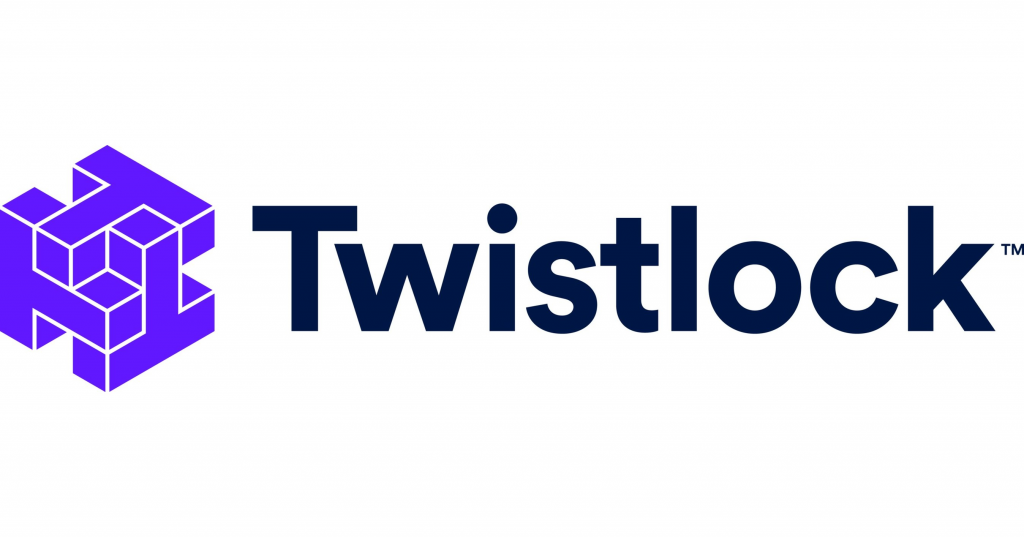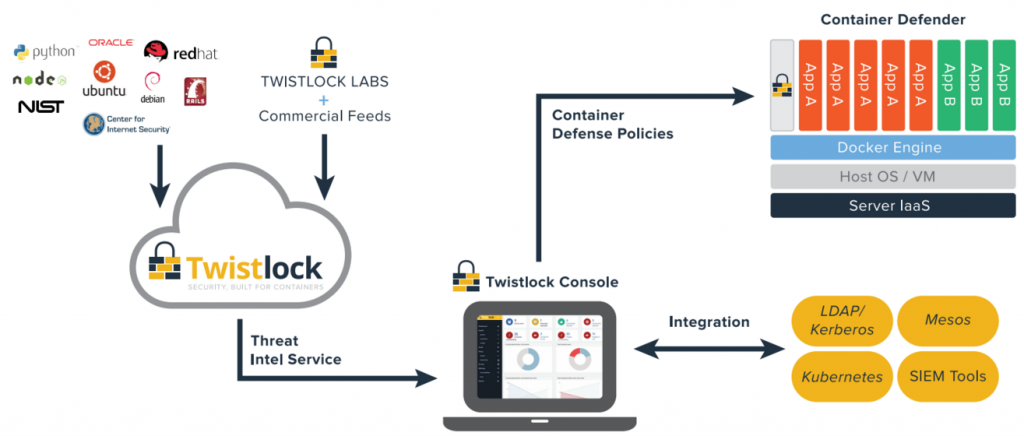What is Twistlock?

Twistlock, now known as Palo Alto Networks Prisma Cloud, is a comprehensive cloud-native security platform designed to protect containerized applications and serverless workloads across cloud environments. It provides a wide range of features and capabilities to secure containerized applications and cloud-native architectures.
Prisma Cloud (formerly Twistlock) is a versatile platform that addresses the security and compliance needs of modern cloud-native architectures, including containers, serverless, and microservices. It helps organizations ensure the security, compliance, and reliability of their cloud-native applications across various cloud platforms.
Top 10 use cases of Twistlock:
Here are the top 10 use cases for Twistlock (Prisma Cloud):
- Container Image Scanning: Prisma Cloud scans container images for vulnerabilities, malware, and misconfigurations, ensuring that only secure images are deployed.
- Vulnerability Management: It offers vulnerability assessment and management, helping organizations prioritize and remediate vulnerabilities based on their severity.
- Compliance Assurance: Prisma Cloud helps organizations maintain compliance with security standards and regulatory requirements by providing compliance checks, audit trails, and reporting.
- Runtime Protection: Prisma Cloud monitors running containers and serverless functions in real-time, detecting and responding to security threats, anomalies, and policy violations.
- Serverless Security: It extends its security capabilities to serverless functions, ensuring that event-driven serverless applications are protected.
- CI/CD Pipeline Integration: Prisma Cloud integrates with CI/CD pipelines to automate security checks during image builds and deployments, promoting DevSecOps practices.
- Network Segmentation: Organizations can enforce network segmentation policies to control communication between containers, microservices, and serverless functions, reducing the attack surface.
- Custom Security Policies: Users can define custom security policies to enforce specific security and compliance requirements tailored to their organization’s needs.
- Incident Response: In the event of security incidents or operational issues, Prisma Cloud provides incident response capabilities, enabling organizations to investigate, contain, and remediate threats.
- Kubernetes Security: Prisma Cloud provides Kubernetes-specific security controls, including policy enforcement, network segmentation, and runtime protection for Kubernetes clusters.
- Microservices Security: Organizations can secure individual microservices within their containerized applications, implementing fine-grained access controls and network policies.
- Application Context: Prisma Cloud provides context-aware security, allowing organizations to understand the context in which containers and serverless functions operate, aiding in threat detection and response.
- Multi-Cloud Security: Prisma Cloud supports multiple cloud platforms, ensuring consistent security policies and enforcement across different cloud environments.
- Log Analysis: Organizations can analyze logs from containerized applications and infrastructure to gain insights into system behavior and troubleshoot issues.
- Identity and Access Management (IAM) Controls: Prisma Cloud helps organizations manage and secure access to cloud resources and container environments through IAM controls.
- Forensic Analysis: It offers comprehensive forensic analysis capabilities to investigate security incidents and performance problems, including the ability to trace system calls and activities.
What are the feature of Twistlock?
Twistlock, now known as Palo Alto Networks Prisma Cloud, is a cloud-native security platform designed to protect containerized applications and serverless workloads across multi-cloud environments. Here are the key features of Twistlock (Prisma Cloud), along with an overview of how it works and its architecture:
Key Features of Twistlock (Prisma Cloud):
- Container Image Scanning: Prisma Cloud scans container images for vulnerabilities, malware, and misconfigurations, ensuring that only secure images are deployed.
- Runtime Protection: It provides runtime protection for containers and serverless functions, continuously monitoring for security threats, anomalies, and policy violations.
- Vulnerability Management: Twistlock helps organizations manage vulnerabilities by prioritizing and remediating issues based on their severity, reducing the attack surface.
- Compliance Assurance: Prisma Cloud assists organizations in maintaining compliance with security standards and regulatory requirements by providing compliance checks, audit trails, and reporting.
- CI/CD Pipeline Integration: It integrates seamlessly into CI/CD pipelines, automating security checks during image builds and deployments, promoting DevSecOps practices.
- Kubernetes Security: Prisma Cloud offers Kubernetes-specific security controls, including policy enforcement, network segmentation, and runtime protection for Kubernetes clusters.
- Serverless Security: The platform extends its security capabilities to serverless functions, ensuring that event-driven serverless applications are protected.
- Network Segmentation: Organizations can enforce network segmentation policies to control communication between containers, microservices, and serverless functions, reducing the attack surface.
- Custom Security Policies: Users can define custom security policies to enforce specific security and compliance requirements tailored to their organization’s needs.
- Incident Response: In the event of security incidents or operational issues, Prisma Cloud provides incident response capabilities, enabling organizations to investigate, contain, and remediate threats.
How Twistlock works and Architecture?

- Agent Deployment: Twistlock (Prisma Cloud) deploys lightweight agents on container hosts, Kubernetes nodes, and serverless runtime environments to collect data on container activities, system calls, and network traffic.
- Image Scanning: Container images are scanned for vulnerabilities, malware, and misconfigurations during the CI/CD pipeline or before deployment. Twistlock provides recommendations for remediation.
- Policy Enforcement: Organizations can define security and compliance policies, which are enforced during image scanning and at runtime. Policy violations trigger alerts and remediation actions.
- Runtime Protection: Twistlock continuously monitors running containers and serverless functions in real-time, detecting and responding to security threats, anomalies, and policy violations.
- Alerting and Notifications: The platform offers real-time alerting and notifications for security incidents and policy violations, enabling timely responses.
- Centralized Management: Prisma Cloud provides a centralized management console where users can configure policies, view security findings, and perform compliance checks.
Twistlock (Prisma Cloud) consists of several components that work together to provide comprehensive security and compliance for containerized applications and serverless workloads:
- Defender Agents: These lightweight agents are deployed on container hosts, Kubernetes nodes, and serverless runtimes. They collect data on container activities, system calls, and network traffic.
- Console: The management console provides a user interface for configuring security policies, viewing security findings, and managing compliance checks.
- Defender Controllers: These components manage agent deployment, image scanning, and runtime protection. They analyze data collected by agents and enforce security policies.
- Data Lake: Prisma Cloud stores collected data, providing historical analysis and reporting capabilities for security and compliance audits.
- Integrations: Prisma Cloud integrates with CI/CD pipelines, container registries, cloud providers, Kubernetes, and other security tools to provide seamless security and compliance across multi-cloud environments.
- Policy Engine: Users can define custom security and compliance policies through the policy engine, which enforces policies during image scanning and runtime protection.
Twistlock (Prisma Cloud) is designed to secure containerized applications and serverless workloads in a multi-cloud environment. It offers flexibility, scalability, and a unified view of security and compliance, helping organizations ensure the security, compliance, and reliability of their cloud-native applications.
How to Install Twistlock?
To install Twistlock, you can use one of the following methods:
Using the Twistlock CLI:
- Download the Twistlock CLI for your operating system from the Twistlock website.
- Install the Twistlock CLI.
- Configure the Twistlock CLI with your Twistlock account credentials.
Using the Twistlock Helm chart:
- Add the Twistlock Helm repository:
helm repo add twistlock https://helm.twistlock.com- Update the Helm repository index:
helm repo update- Install the Twistlock Helm chart:
helm install twistlock twistlock/twistlock --namespace twistlockUsing the Twistlock Docker image:
- Pull the Twistlock Docker image:
docker pull twistlock/twistlock- Run the Twistlock Docker image:
docker run -d --name twistlock -p 8080:8080 twistlock/twistlockOnce Twistlock is installed, you can access the Twistlock Console UI at the following URL:
http://localhost:8080Additional tips:
- You can install Twistlock on-premises or in the cloud.
- Twistlock supports a variety of operating systems and cloud platforms.
- You can integrate Twistlock with your CI/CD pipeline to automate security checks.
- Twistlock provides a variety of features to help you secure your containerized applications, such as:
- Container scanning: Twistlock scans your images and containers for vulnerabilities, malware, and other threats.
- Runtime security: Twistlock monitors your running containers for suspicious activity and blocks threats in real time.
- Compliance scanning: Twistlock scans your images and containers for compliance with industry standards and regulations.
Basic Tutorials of Twistlock: Getting Started

The following are the steps of basic tutorial of Twistlock:
1. Install Twistlock:
Follow the instructions in my previous response to install Twistlock.
2. Access the Twistlock Console UI:
Once Twistlock is installed, you can access the Twistlock Console UI at the following URL:
http://localhost:8080
3. Create a scan policy:
A scan policy defines the types of scans that Twistlock will perform on your images and containers.
To create a scan policy:
- Click Policies in the left-hand menu.
- Click Create Policy.
- Give your policy a name and select the types of scans that you want to perform.
- Click Create.
4. Scan an image:
To scan an image, you can use the Twistlock CLI, the Twistlock Console UI, or the Twistlock API.
To scan an image using the Twistlock CLI:
twistlock scan image <image-name>
To scan an image using the Twistlock Console UI:
- Click Images in the left-hand menu.
- Click the name of the image that you want to scan.
- Click Scan.
To scan an image using the Twistlock API:
Refer to the Twistlock API documentation for instructions on how to scan an image using the API.
5. View the scan results:
Once the scan is complete, you can view the results in the Twistlock Console UI.
To view the scan results in the Twistlock Console UI:
- Click Images in the left-hand menu.
- Click the name of the image whose scan results you want to view.
- Click Vulnerabilities, Malware, or Compliance to view the scan results.
6. Fix the vulnerabilities:
Once you have viewed the scan results, you can fix the vulnerabilities in your image.
To fix a vulnerability, you need to update the image to use a newer version of the vulnerable package or to patch the vulnerability.
Once you have fixed the vulnerabilities, you can scan the image again to verify that the vulnerabilities have been fixed.
Additional tips:
- You can integrate Twistlock with your CI/CD pipeline to automate security checks.
- Twistlock provides a variety of other features, such as compliance reporting and incident response.
Email- contact@devopsschool.com

 Starting: 1st of Every Month
Starting: 1st of Every Month  +91 8409492687
+91 8409492687  Contact@DevOpsSchool.com
Contact@DevOpsSchool.com
